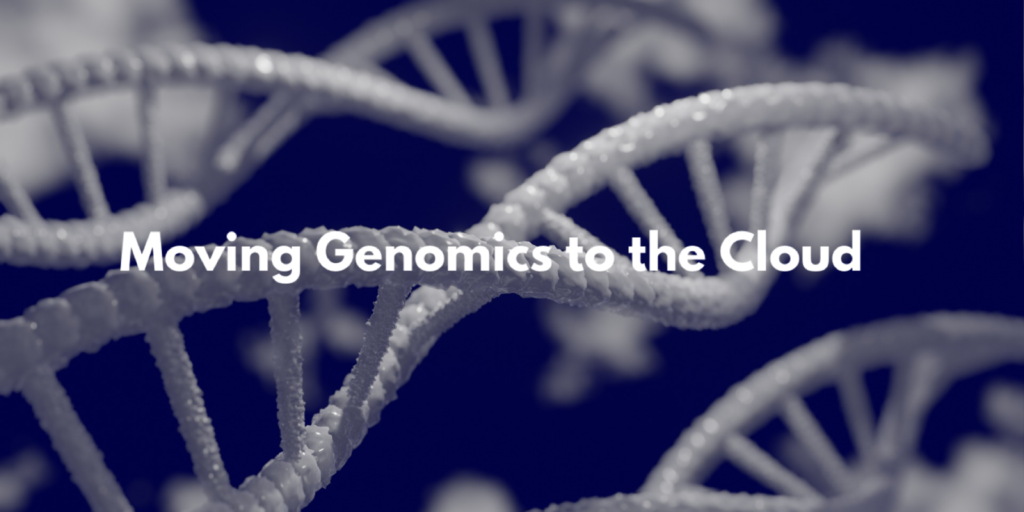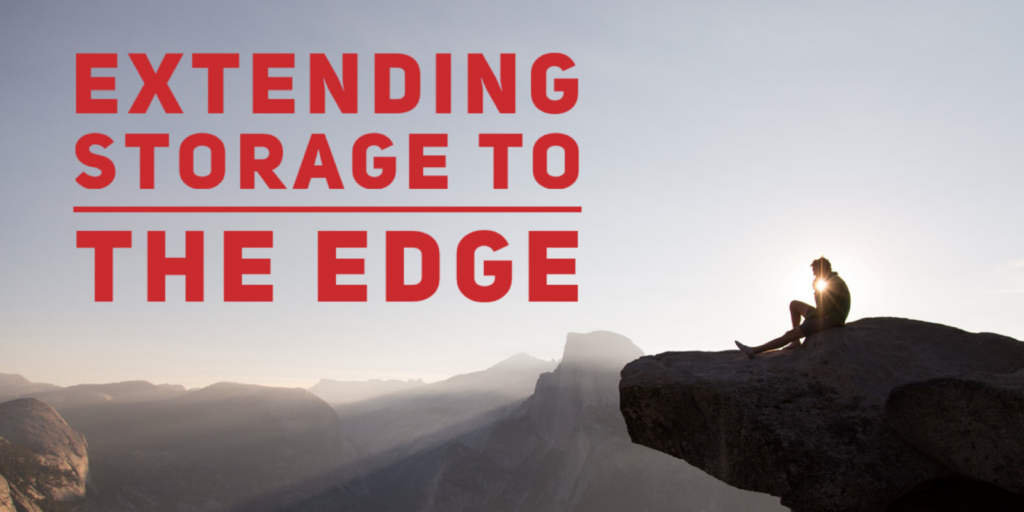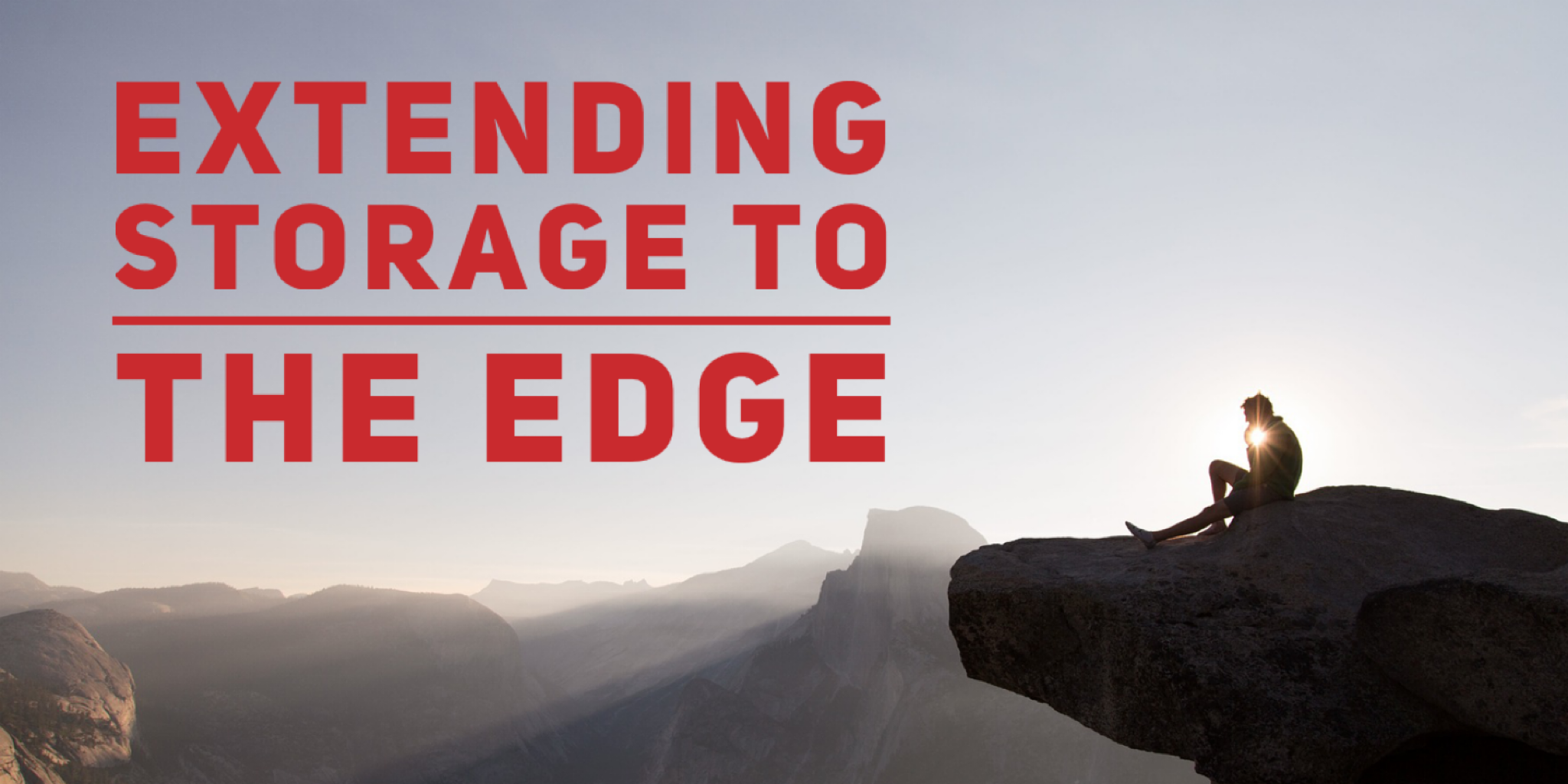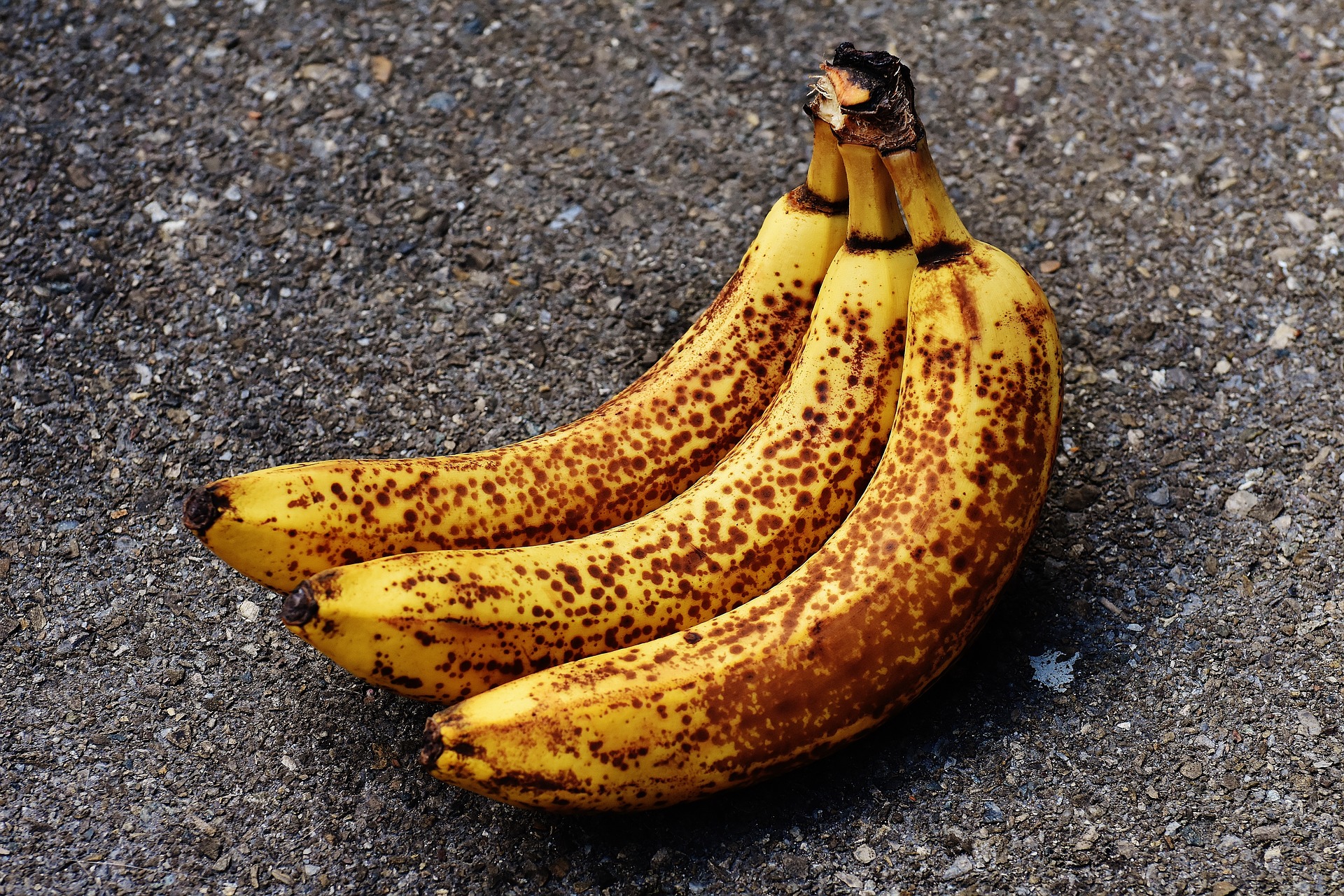- How to best store and manage large genomics datasets
- Methods for sharing large datasets for collaborative analysis
- Legal and ethical implications of storing shareable data in the cloud
- Transferring large data sets and the impact on storage and networking

Moving Genomics to the Cloud
Jul 27, 2021

Find a similar article by tags
UncategorizedExtending Storage to the Edge
Jul 19, 2021

- Emerging patterns of data movement and the use cases that drive them
- Cloud Bursting
- Federated Learning across the Edge and Hybrid Cloud
- Considerations for distributed cloud storage architectures to match these emerging patterns
Find a similar article by tags
UncategorizedLeave a Reply
Extending Storage to the Edge
Jul 19, 2021

- Emerging patterns of data movement and the use cases that drive them
- Cloud Bursting
- Federated Learning across the Edge and Hybrid Cloud
- Considerations for distributed cloud storage architectures to match these emerging patterns
Leave a Reply
A Storage Debate Q&A: Hyperconverged vs. Disaggregated vs. Centralized
Jul 12, 2021

Find a similar article by tags
Hyperconverged Infrastructure Hyperconverged Infrastructure Networked StorageLeave a Reply
An Easy Path to Confidential Computing
Jul 6, 2021

Find a similar article by tags
UncategorizedLeave a Reply
Confidential Computing FAQ
Jun 25, 2021

Find a similar article by tags
UncategorizedLeave a Reply
Accelerating Disaggregated Storage to Optimize Data-Intensive Workloads
Jun 21, 2021

Thanks to big data, artificial intelligence (AI), the Internet of things (IoT), and 5G, demand for data storage continues to grow significantly. The rapid growth is causing storage and database-specific processing challenges within current storage architectures. New architectures, designed with millisecond latency, and high throughput, offer in-network and storage computational processing to offload and accelerate data-intensive workloads.
On June 29, 2021, SNIA Compute, Memory and Storage Initiative will host a lively webcast discussion on today’s storage challenges in an aggregated storage world and if a disaggregated storage model could optimize data-intensive workloads. We’ll talk about the concept of a Data Processing Unit (DPU) and if a DPU should be combined with a storage data processor to accelerate compute-intensive functions. We’ll also introduce the concept of key value and how it can be an enabler to solve storage problems.
Join moderator Tim Lustig, Co- Chair of the CMSI Marketing Committee, and speakers John Kim from NVIDIA and Kfir Wolfson from Pliops as we shift into overdrive to accelerate disaggregated storage. Register now for this free webcast.
The post Accelerating Disaggregated Storage to Optimize Data-Intensive Workloads first appeared on SNIA Compute, Memory and Storage Blog.
Find a similar article by tags
Leave a Reply
Storage Technologies & Practices Ripe for Refresh – Part 2
Jun 7, 2021

Leave a Reply
How SNIA Swordfish™ Expanded with NVMe® and NVMe-oF™
Jun 2, 2021

The SNIA Swordfish™ specification and ecosystem are growing in scope to include full enablement and alignment for NVMe® and NVMe-oF client workloads and use cases. By partnering with other industry-standard organizations including DMTF®, NVM Express, and OpenFabrics Alliance (OFA), SNIA’s Scalable Storage Management Technical Work Group has updated the Swordfish bundles from version 1.2.1 and later to cover an expanding range of NVMe and NVMe-oF functionality including NVMe device management and storage fabric technology management and administration.
The Need
Large-scale computing designs are increasingly multi-node and linked together through high-speed networks. These networks may be comprised of different types of technologies, fungible, and morphing. Over time, many different types of high-performance networking devices will evolve to participate in these modern, coupled-computing platforms. New fabric management capabilities, orchestration, and automation will be required to deploy, secure, and optimally maintain these high-speed networks.
The NVMe and NVMe-oF specifications provide comprehensive management for NVMe devices at an individual level, however, when you want to manage these devices at a system or data center level, DMTF Redfish and SNIA Swordfish are the industry’s gold standards. Together, Redfish and Swordfish enable a comprehensive view across the system, data center, and enterprise, with NVMe and NVMe-oF instrumenting the device-level view. This complete approach provides a way to manage your entire environment across technologies with standards-based management, making it more cost-effective and easier to operate.
The Approach
The expanded NVMe resource management within SNIA Swordfish is comprised of a mapping between the DMTF Redfish, Swordfish, and NVMe specifications, enabling developers to construct a standard implementation within the Redfish and Swordfish service for any NVMe and NVMe-oF managed device.
The architectural approach to creating the SNIA Swordfish 1.2.1 version of the standard began with a deep dive into the existing management models of systems and servers for Redfish, storage for Swordfish, and fabrics management within NVM Express. After evaluating each approach, there was a step-by-step walkthrough to map the models. From that, we created mockups and a comprehensive mapping guide using examples of object and property level mapping between the standard ecosystems.
In addition, Swordfish profiles were created that provide a comprehensive representation of required properties for implementations. These profiles have been incorporated into the new Swordfish Conformance Test Program (CTP), to support NVMe capabilities. Through its set of test suites, the CTP validates that a company’s products conform to a specified version of the Swordfish specification. CTP supports conformance testing against multiple versions of Swordfish.
What’s Next?
In 2021, the Swordfish specification will continue to be enhanced to fully capitalize on the fabrics model by extending fabric technology-specific use cases and creating more profiles for additional device types.
Want to learn more?
Watch SNIA’s on-demand webcast, “Universal Fabric Management for Tomorrow’s Data Centers,” where Phil Cayton, Senior Staff Software Engineer, Intel; and Richelle Ahlvers, storage technology enablement architect, Intel Corporation, Board of Directors, SNIA, provide insights into how standard organizations are working together to improve and promote the vendor-neutral, standards-based management of open source fabrics and remote network services or devices in high-performance data center infrastructures.
Leave a Reply
How SNIA Swordfish™ Expanded with NVMe® and NVMe-oF™
Jun 2, 2021

 specification and ecosystem are growing in scope to include full enablement and alignment for NVMe® and NVMe-oF client workloads and use cases. By partnering with other industry-standard organizations including DMTF®, NVM Express, and OpenFabrics Alliance (OFA), SNIA’s Scalable Storage Management Technical Work Group has updated the Swordfish bundles from version 1.2.1 and later to cover an expanding range of NVMe and NVMe-oF functionality including NVMe device management and storage fabric technology management and administration.
The Need
Large-scale computing designs are increasingly multi-node and linked together through high-speed networks. These networks may be comprised of different types of technologies, fungible, and morphing. Over time, many different types of high-performance networking devices will evolve to participate in these modern, coupled-computing platforms. New fabric management capabilities, orchestration, and automation will be required to deploy, secure, and optimally maintain these high-speed networks.
The NVMe and NVMe-oF specifications provide comprehensive management for NVMe devices at an individual level, however, when you want to manage these devices at a system or data center level, DMTF Redfish and SNIA Swordfish are the industry’s gold standards. Together, Redfish and Swordfish enable a comprehensive view across the system, data center, and enterprise, with NVMe and NVMe-oF instrumenting the device-level view. This complete approach provides a way to manage your entire environment across technologies with standards-based management, making it more cost-effective and easier to operate.
The Approach
The expanded NVMe resource management within SNIA Swordfish is comprised of a mapping between the DMTF Redfish, Swordfish, and NVMe specifications, enabling developers to construct a standard implementation within the Redfish and Swordfish service for any NVMe and NVMe-oF managed device.
The architectural approach to creating the SNIA Swordfish 1.2.1 version of the standard began with a deep dive into the existing management models of systems and servers for Redfish, storage for Swordfish, and fabrics management within NVM Express. After evaluating each approach, there was a step-by-step walkthrough to map the models. From that, we created mockups and a comprehensive mapping guide using examples of object and property level mapping between the standard ecosystems.
In addition, Swordfish profiles were created that provide a comprehensive representation of required properties for implementations. These profiles have been incorporated into the new Swordfish Conformance Test Program (CTP), to support NVMe capabilities. Through its set of test suites, the CTP validates that a company’s products conform to a specified version of the Swordfish specification. CTP supports conformance testing against multiple versions of Swordfish.
What’s Next?
In 2021, the Swordfish specification will continue to be enhanced to fully capitalize on the fabrics model by extending fabric technology-specific use cases and creating more profiles for additional device types.
Want to learn more?
Watch SNIA’s on-demand webcast, “Universal Fabric Management for Tomorrow’s Data Centers,” where Phil Cayton, Senior Staff Software Engineer, Intel; and Richelle Ahlvers, storage technology enablement architect, Intel Corporation, Board of Directors, SNIA, provide insights into how standard organizations are working together to improve and promote the vendor-neutral, standards-based management of open source fabrics and remote network services or devices in high-performance data center infrastructures.
[contact-form]
specification and ecosystem are growing in scope to include full enablement and alignment for NVMe® and NVMe-oF client workloads and use cases. By partnering with other industry-standard organizations including DMTF®, NVM Express, and OpenFabrics Alliance (OFA), SNIA’s Scalable Storage Management Technical Work Group has updated the Swordfish bundles from version 1.2.1 and later to cover an expanding range of NVMe and NVMe-oF functionality including NVMe device management and storage fabric technology management and administration.
The Need
Large-scale computing designs are increasingly multi-node and linked together through high-speed networks. These networks may be comprised of different types of technologies, fungible, and morphing. Over time, many different types of high-performance networking devices will evolve to participate in these modern, coupled-computing platforms. New fabric management capabilities, orchestration, and automation will be required to deploy, secure, and optimally maintain these high-speed networks.
The NVMe and NVMe-oF specifications provide comprehensive management for NVMe devices at an individual level, however, when you want to manage these devices at a system or data center level, DMTF Redfish and SNIA Swordfish are the industry’s gold standards. Together, Redfish and Swordfish enable a comprehensive view across the system, data center, and enterprise, with NVMe and NVMe-oF instrumenting the device-level view. This complete approach provides a way to manage your entire environment across technologies with standards-based management, making it more cost-effective and easier to operate.
The Approach
The expanded NVMe resource management within SNIA Swordfish is comprised of a mapping between the DMTF Redfish, Swordfish, and NVMe specifications, enabling developers to construct a standard implementation within the Redfish and Swordfish service for any NVMe and NVMe-oF managed device.
The architectural approach to creating the SNIA Swordfish 1.2.1 version of the standard began with a deep dive into the existing management models of systems and servers for Redfish, storage for Swordfish, and fabrics management within NVM Express. After evaluating each approach, there was a step-by-step walkthrough to map the models. From that, we created mockups and a comprehensive mapping guide using examples of object and property level mapping between the standard ecosystems.
In addition, Swordfish profiles were created that provide a comprehensive representation of required properties for implementations. These profiles have been incorporated into the new Swordfish Conformance Test Program (CTP), to support NVMe capabilities. Through its set of test suites, the CTP validates that a company’s products conform to a specified version of the Swordfish specification. CTP supports conformance testing against multiple versions of Swordfish.
What’s Next?
In 2021, the Swordfish specification will continue to be enhanced to fully capitalize on the fabrics model by extending fabric technology-specific use cases and creating more profiles for additional device types.
Want to learn more?
Watch SNIA’s on-demand webcast, “Universal Fabric Management for Tomorrow’s Data Centers,” where Phil Cayton, Senior Staff Software Engineer, Intel; and Richelle Ahlvers, storage technology enablement architect, Intel Corporation, Board of Directors, SNIA, provide insights into how standard organizations are working together to improve and promote the vendor-neutral, standards-based management of open source fabrics and remote network services or devices in high-performance data center infrastructures.
[contact-form]







Leave a Reply